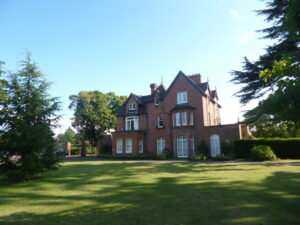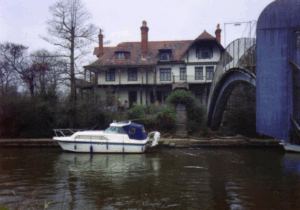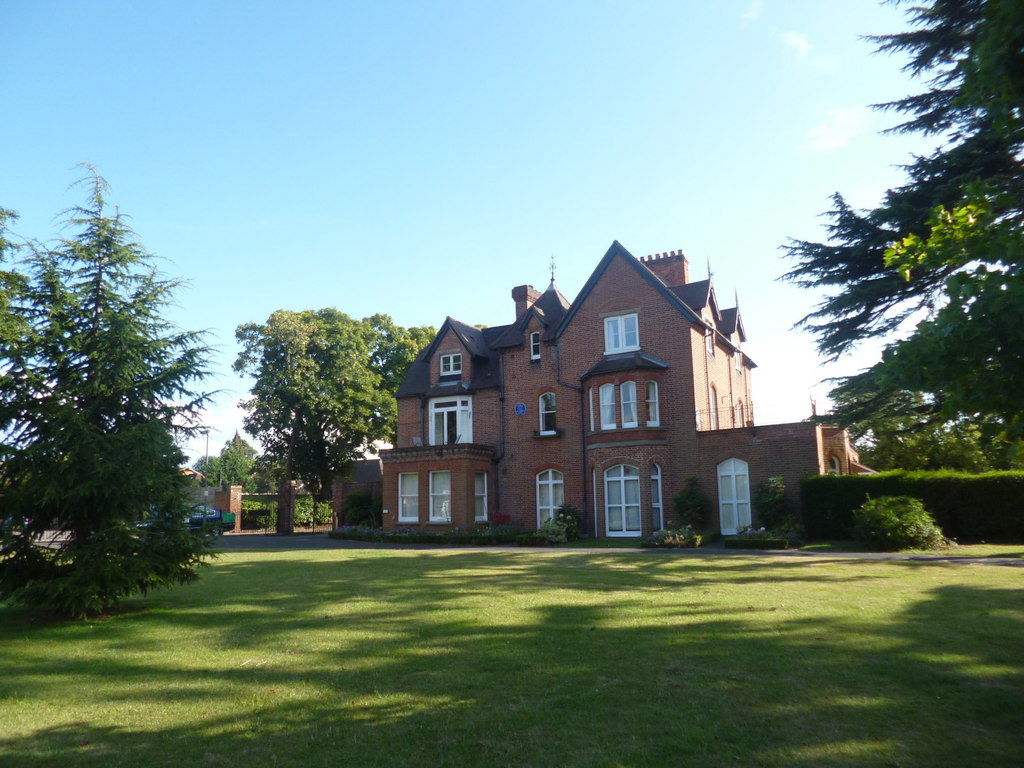15 September, 1897
At work – tired after bycicling [sic]. wrote Fanny. Bertie returned
to town.
Sullivan’s “bycicling” tiredness might have been caused on the previous day, when he “byked” to The Mitre, Hampton Court, a 4.2 mile ride, one-way, from an address which today is called Sullivan’s Reach. The Mitre, which still exists, is one of those ancient British institutions that started in 1665 as a guest house for visitors to Hampton Court and is today a luxe hotel on the River Thames.
Sullivan was living at what he called River House, a large riverside house in Walton-on-Thames which he rented in 1894.

Well, rented is inaccurate. In 1894 Sullivan searched for a pleasant country house he could rent for the summer. It’s unsurprising that he focused his search on the River Thames, near the town of Weybridge, where in 1890, his friend and business partner Richard D’Oyly Carte had purchased an island and built his own river house.
Many of Sullivan’s richest friends were born possessing lands and houses both in the City of London and in the countryside, and the landed gentry enjoyed escaping the city during the summer. Sullivan was born with neither land nor family money, but he did enjoy getting away from the metropolis to work without distraction. Much of his music was written outside his primary home in London, either in the provinces of England or in villages in Germany and France.

Unlike Carte, Sullivan was never rich enough to purchase an island in the Thames; he never owned any real estate, anywhere. Instead, he found River House (I think that was his name for the property). River House is on the Thames in the town of Walton-on-Thames, a relatively short, upstream row to Carte’s island, Folly Eyot. River House is still there, with a blue plaque commemorating Sullivan’s residency.
On May 29, 1894 Sullivan wrote of River House:
beautiful grounds – excellent house – right size – everything compact & in beautiful order – just the thing I want.
There was only one problem, the owners didn’t let (rent) the house out; the property had a long-term lease, which was for sale. The owner would accept £1600 (about £265K today) for the lease. Sir George Lewis, Sullivan’s attorney, suggested offering £1400, for 21 years. Sullivan gives us no further details of the negotiations, but he completed the purchase. I don’t know whether any other payments were required, but one year later, May 1895, Sullivan wrote a cheque for £250 to a “Riverside Trust”. Whatever that means.
Sullivan also purchased a few furnishings from the house which were auctioned off — he especially wanted a billiards table. In July, 1894 he started buying new things for the house, going for example to “Harrods – bought dinner & tea service etc”. New carpets and furniture followed. By July 21, 1894 Sullivan was well installed at River House, and “my grounds [were] full” for the Molesey Regatta, an annual Thames boat race still run today.
For the years 1894-1897, Sullivan’s diaries are full of happy reports from River House. He walked, he biked, he triked and he rowed, especially upriver to visit the Cartes. And he did a lot of work.
On this particular day, he wrote to Fanny Ronalds, and his nephew Bertie (Herbert Sullivan) went back into the city of London. He had stayed with Sullivan over an extended weekend.
But there’s also a mystery in this entry, “At work”. In Sullivan’s diaries, “work” always means composition. This is September, 1897. On what piece is Sullivan working? This is a tough one! Hint: it’s not The Beauty Stone.
And there is a sad end to the Tale of River House. In 1898, Sullivan sold its lease, to a draper from Ramsgate called Ernest Syrett, for £1200. He also sold most of its furnishings, for “a valuation.” Why? That was in 1898, Sullivan’s Terrible, Horrible, No Good, Very Bad Year. That tale is yet to be told. But I think—I know, actually—he needed the cash.

